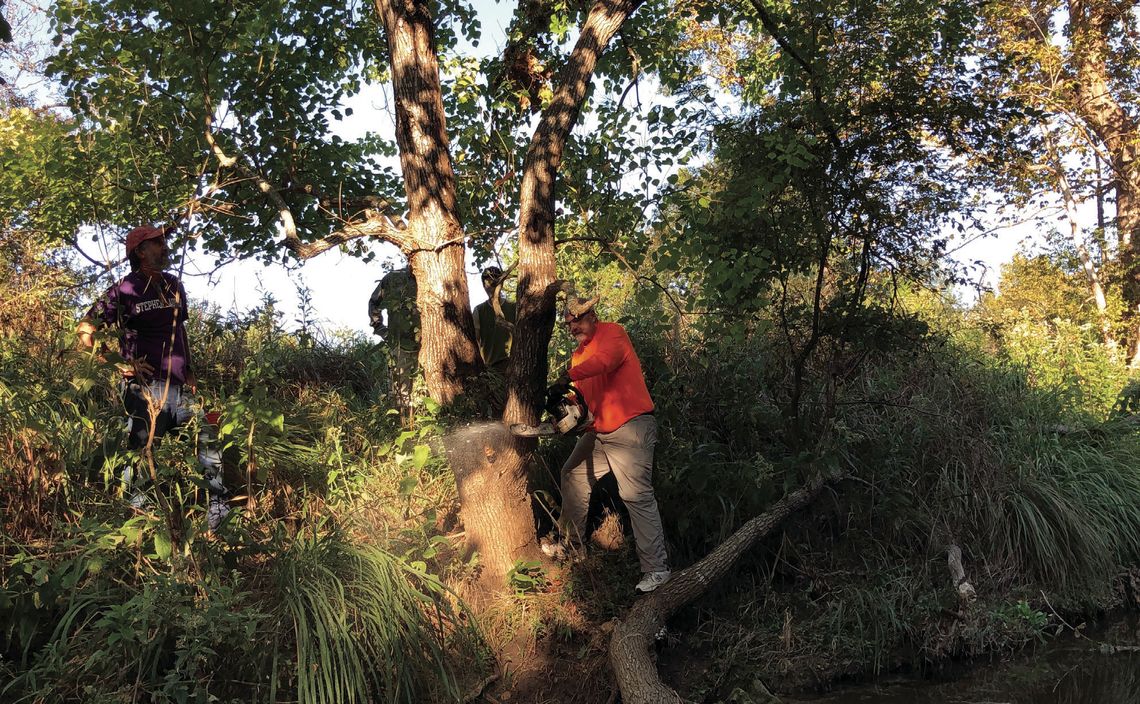AT THE TRAILS
EDITOR’S NOTE: The Cibolo Center for Conservation and the Boerne community have experienced significant growth in recent years. In the spirit of honoring those who paved the way, please enjoy this heritage article originally published in April 2009.
Biologists who study ecological changes long have agreed that the leading reason for the decreasing biodiversity of the world is destruction of habitat.
In the last several years there has been a growing consensus that the second-leading cause of decrease in biodiversity is the invasion of exotic species of animals and plants.
Ever since man came to North America during the last Ice Age, non-native plant species have been continuously introduced to this continent. By now many thousands of exotic plants grow here, and almost none of them do any major harm to natural habitats.
A few percent of these exotic plants, however, have invaded the countryside like bioterrorists, doing major damage to natural ecosystems.
Plants are the fundamental elements of an ecosystem and they affect climate, rates of weathering and erosion, and quality and quantity of surface and subsurface water. Changes in native plant populations can bring changes to every level of the biosphere from the soil zone upward. Removal of native vegetation even may bring long-term changes in regional climates, such as the desertification of parts of northeastern Mexico that were stripped of native forests.
The widespread invasion of alien plants costs a lot of money and time. One recent estimate of the cost of invasive exotic plants to the U.S. economy is $37 billion a year. Reportedly, the botanist at Big Bend National Park recently stated the 90% of his time is spent on controlling exotic species.
In response to the damage done by invasive exotic plants in this state, the Texas Department of Agriculture has identified nearly three dozen “noxious weeds.” State statutes prohibit commercial trade in these plants.
Many of the noxious weeds are aquatic plants that have clogged Texas waterways and replaced the native aquatic vegetation. Also included on the blacklist are several species of Tamarix (salt cedar), invasive shrubs and small trees which have done major damage to riparian and coastal habitats.
One tree on the list of noxious weeds in the Chinese Tallow (Triadica sebifera), which probably still is planted in some home landscapes, even though commercial trafficking in Chinese Tallow is against the law.
Chinese Tallow is fast growing and rapidly crowds out native saplings. This native of the Orient seems to suffer few diseases or predators, making it a tough competitor for native bushes and trees.
The Chinese Tallow tree has been turning Gulf Coast grasslands into single-species forests. Chinese Tallow is also a major threat to riparian habitats in Boerne.
We have removed many Chinese Tallows of various sizes at the Cibolo Nature Center, but there are many more to cut down. Chinese Tallow can be controlled by cutting down and painting the stumps with an approved systemic herbicide. Cutting alone will only allow re-sprouting of multiple trunks.
Even though we have had few re-sprout from treated stumps, new plants are continually coming up because Chinese Tallow are prolific seed producers. As long as there are Chinese Tallow in the area, the seeds will be brought downstream by floods.







Comment
Comments